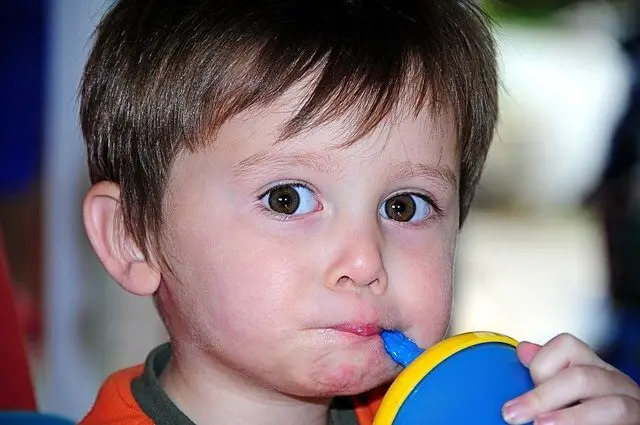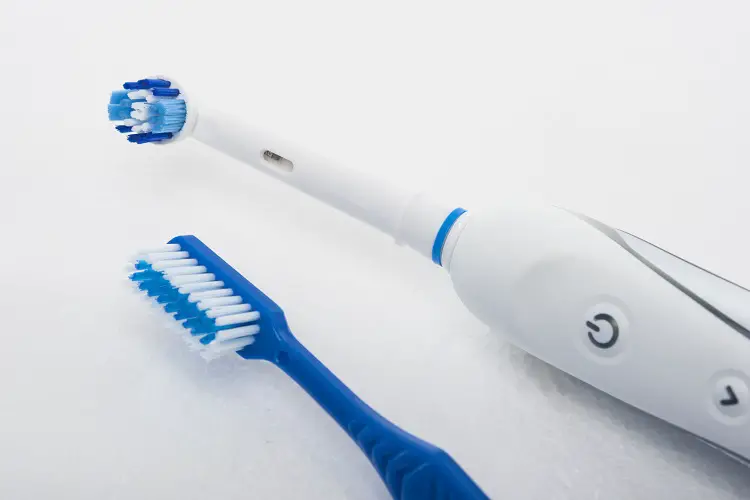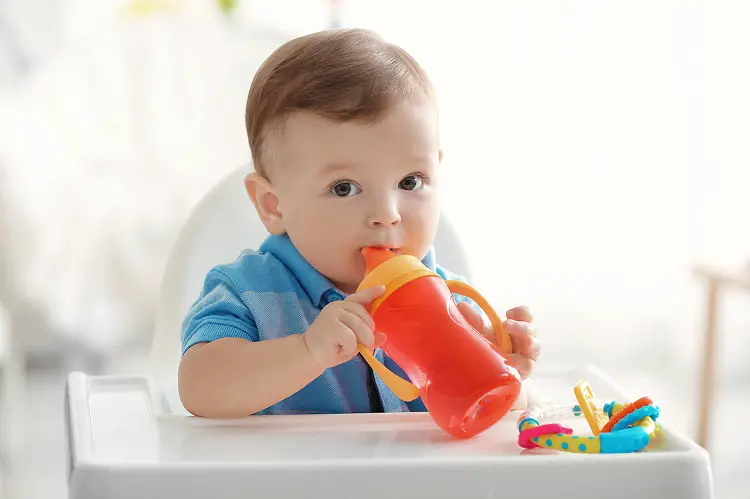Have you been wondering how to clean sippy cup valves? You’ve found a few lost under the couch, and by the time these cups were retrieved, mold or mildew had grown in them and due to their little parts, these make them difficult to clean.
Sippy cups are known for their ability to harbor grime and mold, especially in straw valves and travel valves.
Luckily, this article will show you how to clean sippy cup valves sparkly clean and mold-free. Read on…
How To Clean Sippy Cup Valves

The two important steps in knowing how to clean Sippy cup valves to prevent mold and bacterial growth are cleaning and sanitization/sterilization.
Cleaning requires mild soap and water to physically remove germs and buildup. At the same time, Sanitization, or sterilization, is an additional step to kill stubborn germs on items that have already been cleaned.
Cleaning
- Firstly, rinse the cups and any valves as soon as possible. This practice helps to keep liquids from starting to dry in the nooks, making them difficult to clean.
- Soak the pieces before scrubbing to prevent buildup if you didn’t get the pre-rinse done in time.
- Disassemble all parts (Including straws and valves) before you wash. Many brands have a website video guide illustrating assembling and disassembling the cups.
- Now when you’ve fully disassembled the cups, wash the pieces in warm soapy water using a brush. If your baby’s sippy cups have straws, use a small brush specifically made for cleaning straws.
- Finally, rinse and allow all the parts to completely air dry. Do not reassemble or store the parts when wet, as this can promote mold growth.
Use The Dishwasher
You can use a dishwasher if you have one. However, you’ll still need to fully disassemble the cups and hand wash any pieces the dishwasher cannot clean.
A typical example is the valves that kids bite to open. This part must be hand washed since it must be squeezed to open and access all the surfaces.
Straws are another tricky piece. You’ll need to use a small straw-sized brush to properly clean inside the straws.
After hand washing, you can always put these parts in the dishwasher for a hot rinse/dry. Ensure you run the dishwasher on the “Sterilize” cycle or extra hot for proper cleaning.
If you want to try it, one product that can be of great help is the bottle basket.
It snaps closed to keep cup pieces from dropping into the bottom of the dishwasher and melting on the heating element.
Sanitization
Now that you’ve cleaned your sippy cups, you can sanitize them. There are a few methods you can use.
Use A Dental Brush

It’s difficult to use a bottle brush to clean smaller cup parts, even if you have one equipped with the smaller brush on one end.
I could remember shopping for my dental floss. I saw those small brushes that people use to clean their teeth.
I decided to buy a few of them to see if they could clean out the juice stains in the ‘hard to clean area.’
I soaked the cup in detergent water before using the brush for detail cleaning.” To my surprise, they worked very well.
Use A Microwave Sterilizer
Plastic reusable and limited-use bags are the two known types of sterilizers.
You can use the power of your microwave and steam to kill off any harmful substances lurking in small places of the cup.
If your baby bottle-feeds, you might have one of the plastic versions already, but you may have put it away when your child weaned to a cup.
You can get it out again and use it just like you did for bottles, just fill it with sippy cup tops, valves, and straws.
You can also try the microwave bags if you don’t have the plastic version handy or want something that takes up less space and can travel. You can order them online at discount stores like Wal-Mart or Target.
Use The Stove
A stovetop “hot water bath” is another great way to sanitize baby bottles, breast pump parts, and sippy cups. To do this, boil a pot of water, then drop the pieces in. Then cover the pot and let it boil for about five minutes.
Related Posts:
Other FAQ’s
What Causes Mold Growth?
Four conditions are required for mold to thrive: mold spores, temperature, moisture, and mold food.
Mold spores are airborne; they’re everywhere in small quantities, and cups are typically stored at room temperature, so there’s not too much you can do to control those.
The most effective way to prevent mold from growing in your children’s cups is to properly clean them to reduce trace foods and, more importantly, to eliminate all moisture after cleaning.
What If My Baby Ingests Mold?
If you find that your child has used a Sippy cup with mold or mildew, don’t be worried. Remember that all molds are not toxic, and not all babies will react to mold.
However, it is important to keep a close eye on cleaning your baby’s cups properly to reduce their risk of mold exposure, as some are toxic and can harm health.
Some symptoms children may experience after ingesting mold are:
- Abdominal cramps.
- Vomiting.
- Diarrhea.
- Dehydration.
- Nausea.
If your baby has an allergy to mold, they could experience more acute symptoms commonly associated with food allergies, such as:
- Rashes.
- Breathing difficulties.
- Swelling of the face, lips, or tongue.
- Tingling sensation.
- Sneezing.
- Running nose.
- Nasal congestion.
- Coughing.
- Wheezing.
- Flu-like symptoms.
Can Mold Be Killed Completely?
The Sippy cups have small parts and hard-to-reach corners that can easily trap particles of milk or juice and hoard harmful moisture, creating a natural habitat for mold to grow.
To kill mold in your baby’s Sippy cup, use bleach, vinegar, and tea tree oil.
When using this substance, dilute them well and wash your child’s Sippy cups to remove any chemical residue after disinfecting them. High temperature also kills mold. This implies that steam sterilizers or boiling water can be used to kill mold spores.
Remember, it’s impossible to stop mold growth entirely from your life as the spores are always in the air.
However, it is possible to clean your baby’s Sippy cup thoroughly to remove the fungus and make it environmentally safe for your little one to use once again.
Read Also: How To Clean Used Baby Stuff
Conclusion
Because of all the nooks and crannies baby sippy cups have, they can easily trap small food particles and grow mold quickly making them difficult to clean.
However, with the right tools and our step-by-step guide, you reduce the risk of providing the three elements mold need to effectively grow –which are food, water, and warmth and by doing this, you’ll easily enjoy sparkling clean sippy cups and ready for the next big adventure.
If you have any other tips and experiences on cleaning sippy cup valves, drop your comment or suggestion below. We would love to hear it. Still, need to know more? Learn The 5 Easy Steps On How To Keep Your NUK Pacifier Clean
